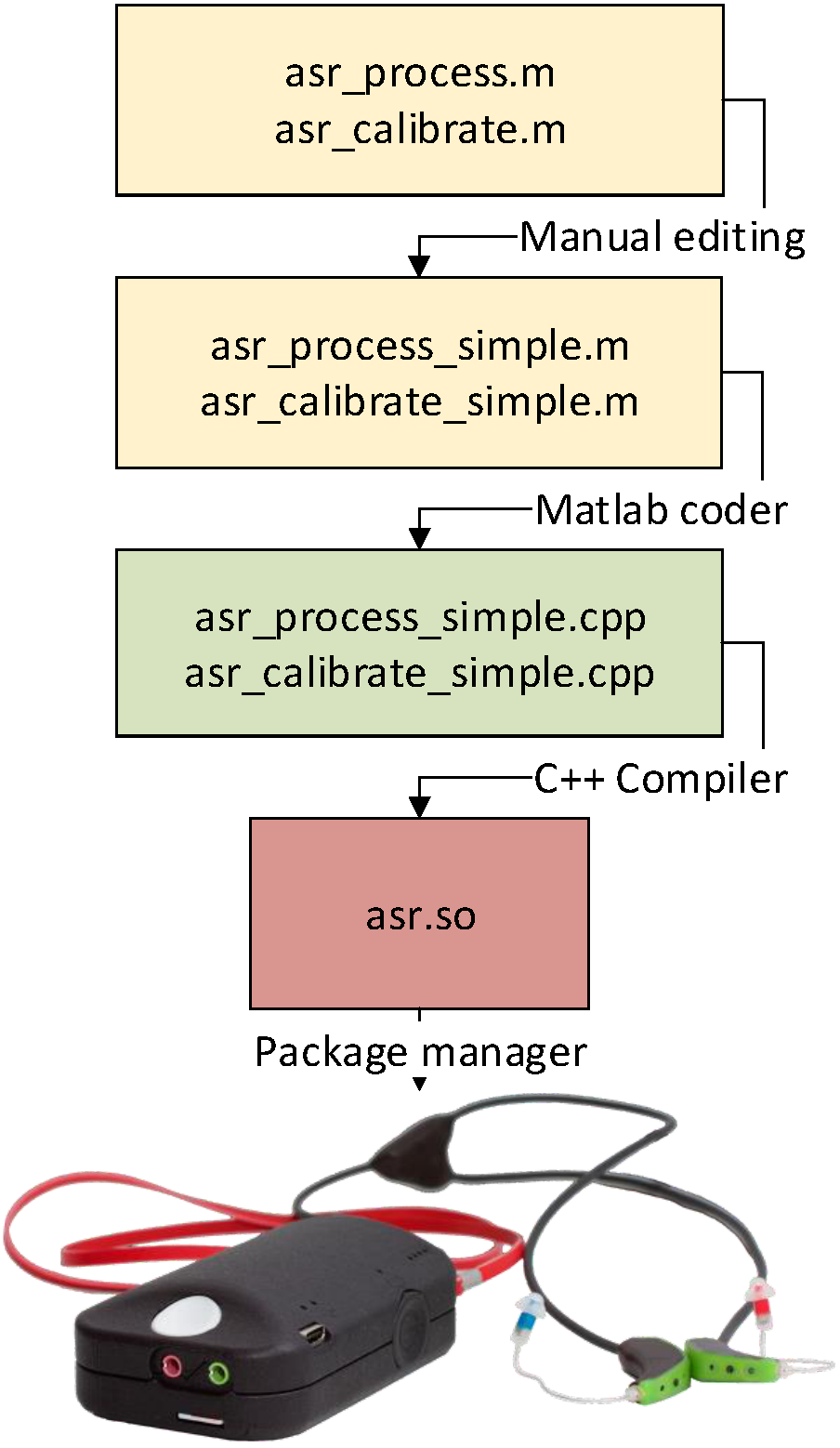Biological data like electroencephalography (EEG) are typically contaminated by unwanted signals, called artifacts. Therefore, many applications dealing with biological data with low signal-to-noise ratio require robust artifact correction. For some applications like brain-computer-interfaces (BCI), the artifact correction needs to be real-time capable. Artifact subspace reconstruction (ASR) is a statistical method for artifact reduction in EEG. However, in its current implementation, ASR cannot be used in mobile data recordings using limited hardware easily. In this report, we add to the growing field of portable, online signal processing methods by describing an implementation of ASR for limited hardware like single-board computers. We describe the architecture, the process of translating and compiling a Matlab codebase for a research platform, and a set of validation tests using publicly available data sets. The implementation of ASR on limited, portable hardware facilitates the online interpretation of EEG signals acquired outside of the laboratory environment.
翻译:电子脑造影等生物数据通常受到不想要的信号(称为人工制品)的污染。因此,许多处理信号对噪音比率低的生物数据的应用都需要强有力的人工制品校正。对于某些应用,如脑计算机界面(BCI),人工制品校正需要实时能力。人工智能子空间重建(ASR)是EEG中减少人工制品的统计方法。然而,在当前实施过程中,用有限的硬件无法使用ASR进行移动数据记录。在本报告中,我们通过描述对单机计算机等有限硬件的ASR实施ASR的日益扩大的便携式在线信号处理方法。我们描述了一个研究平台的架构、翻译和编集Matlab代码库的过程,以及一套使用公开数据集进行的验证测试。在有限的便携式硬件上实施ASR便于在线解释实验室环境外获取的EEG信号。






